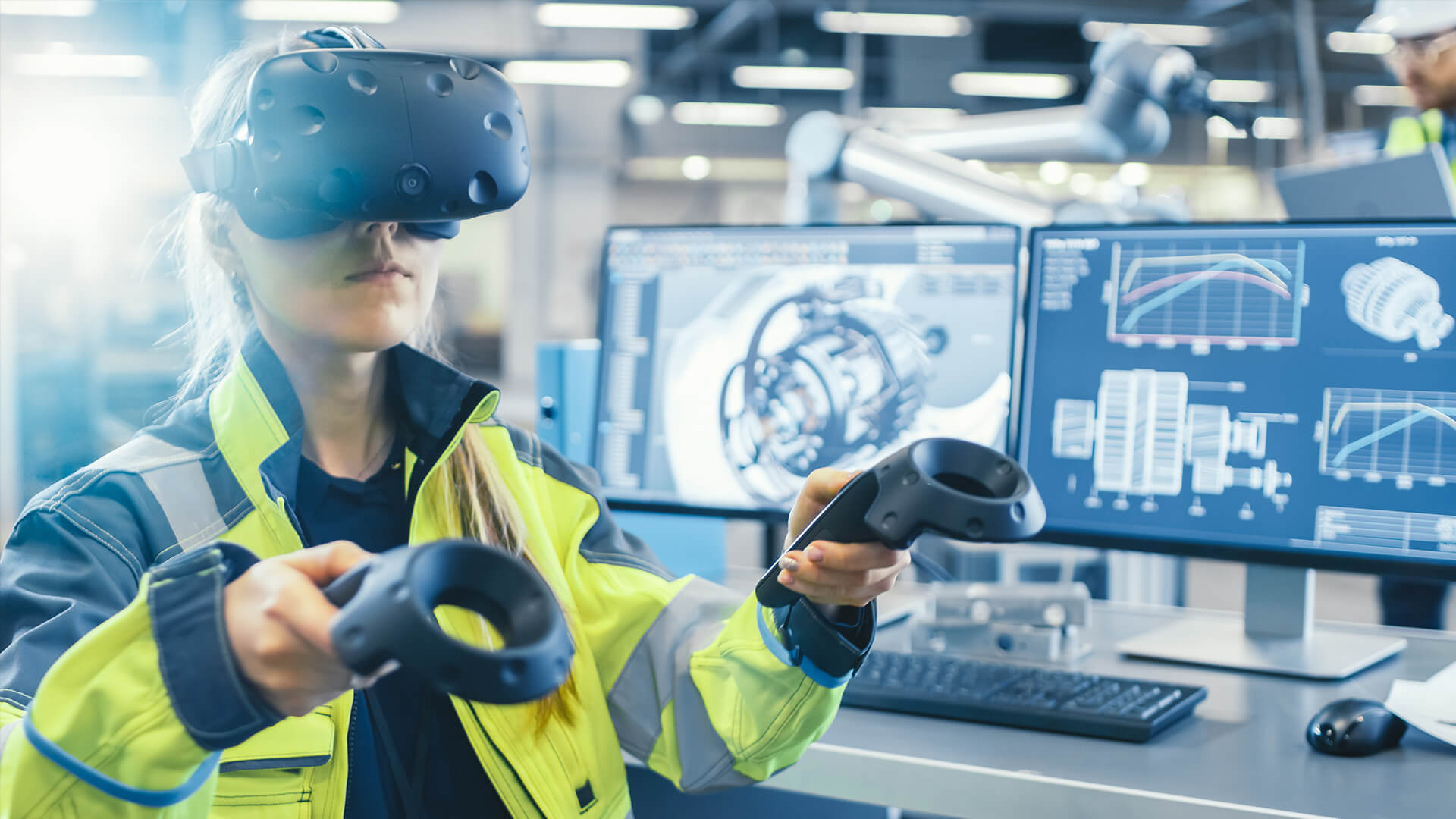VR Labs - Increasing Student Engagement with Virtual Interactions

The concept of having a virtual world began in the early 2000s in order to serve leisurely purposes. Within the last decade, the potential of these virtual environments, which we now call Virtual Reality, has extended towards a myriad of branches such as education, content creation, among others.
Thus, educators, stakeholders in universities for higher education technology trends and researchers have been exploring the undue potential of VR, and one such result of this exploration was Virtual reality labs, or VR labs.
Teachers and professors often have the issue of learner engagement with the learning material they have. This is where increasing student engagement through stem education and vr ar for students comes into place.
What are VR Labs?
Virtual Reality (VR) is the ideal immersive learning experience that engages students like no other. VR Labs allows students and teachers, or anyone that’s interested in a certain topic to conduct advanced science experiments virtually, with no worries of breakage, leakage or other problems.
Instead of reading out of a book in hopes of conceptually understanding, these simulative labs allow students to undergo simulations in three dimensional space such that they are allowed to virtually engage with a particular item and really understand the science behind it.
VR Students can gain knowledge about experiments that are often too complex to be allowed in a regular lab, expensive or dangerous for the classroom.
VR Labs are right up the alley of iXR Labs! Just wearing a VR Headset is enough to transport you to a whole new dimension of learning! Virtual Reality Labs are the best way to make learning a lot less monotonous than listening to a lecture for hours.
Benefits of VR labs for Higher Education

1. A Sensory Treat!
It is the best way to engage students and learners, by involving various senses to give them a wholesome learning experience.
The depths of their learning could be greater than the oceans they can get access to, or the huge buildings they can scale to admire its architectural traits.
2. A penny saved is a penny earned
For educational purposes, it can be extremely cost-efficient! Smartphones can be used with cardboard headsets are enough to get immersed in the world of simulations.
3. Goodbye to sleeping in class!
One would rather want to experience how the Sun gains its energy through VR for students than read it out of their textbooks. Virtual Reality Labs would boost student engagement simply because it’s more interesting to learn and understand concepts through simulations.
These immersive learning labs allow VR students to interact with the virtual environment in real time, thus making learning a lot more personalized.
4. Food for thought?
Visually stimulating classes would tend to make students get more creative. There would be more things to ponder about, and they could come up with interesting solutions.
Experiential learning has proven to provide a higher retention rate for students, where they retain 90% of what they experience as compared to 10% of what they read.
5. Everybody gets a chance!
When it comes to traditional classes, only a portion of the class seems to be active. VR Students who take their time to grasp concepts would tend to feel demotivated.
Using VR Labs for higher education allows teachers to tailor the learning experience based on each student’s pace. They also give dyslexic and disabled students a new way of learning.
"Transform learning, ignite curiosity, and amplify student engagement with VR Labs - where virtual interactions lead to real-world impact. Experience the future of education today!"
VR for Students: Why Virtual Reality is Trending in Education
According to a Fortune BI report, the global virtual reality in higher education market size stood at USD 656.6 million in 2018. It is projected to reach 13,098.2 million USD by 2026, an annual growth rate of 42.9%.
Conducting classes through online classrooms has consistently proven to be highly ineffective, as student engagement drops drastically. vr classrooms , however, give students a chance to be more directly invested.
They develop a questioning attitude and learn and grow organically, by their own will. VR also leaves room for ample communication between students, helping them become more social.
This aspect of improvement in soft skills and potential to build on leadership has been noticed by various Business Schools.
Many MBA programmes, including Stanford University Graduate School of Business are planning to incorporate VR in their curriculum, especially for case studies in order to facilitate a wider range of discussions, with deeper understanding.
It allows students to conceptualize how businesses can apply the topics they learn and implement it practically by talking about topics such as increasing brand engagement, especially through social media.
 Get the App from Meta Store: Download Now
Get the App from Meta Store: Download Now
Conclusion
The future is here, it’s now! Virtual reality is definitely changing the way students learn. Old, traditional methods are being replaced by futuristic solutions like VR Labs, which are also offered by iXR Labs.
We have offerings in branches of Engineering such as Mechanical, Electrical etc., and Medicine including Anatomy, Dissection, Microbiology and further more.
Architecture is another field that we have recently and successfully explored.
Colleges these days are investing in cutting-edge technology in order to improve brand value, get better results overall and in placements, and hope for a surge in admissions.
This will make them leaders in adapting to technological innovations and keeping up with change in trends.




